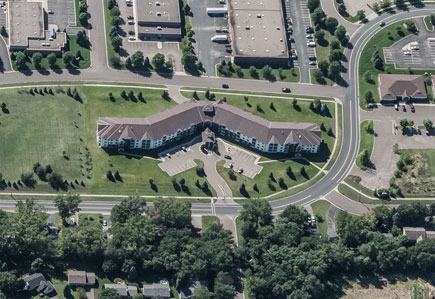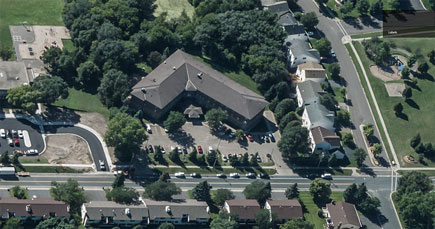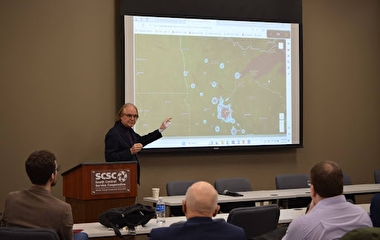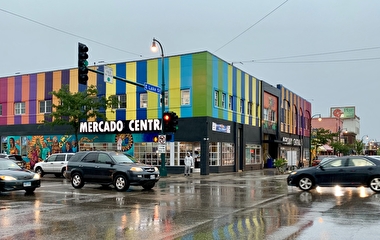Most testing and demonstrations of automated vehicles (AVs) have taken place in large urban areas, but communities of all kinds need to prepare for eventual AV deployment. Small urban and rural communities, in particular, could see benefits from early adoption, as many of their residents are unable to drive because of age or disability.
apartment complexes. Photo: White Bear Lake
A project by U of M researchers provides a framework for small cities and rural areas to create plans to test and demonstrate AVs. “Our goal is that by the time readers finish the report, they know what steps to take, what stakeholders to include, and what questions to ask to create a complete AV demonstration proposal,” says Frank Douma, director of the State and Local Policy Program at the Humphrey School of Public Affairs.
Rural areas have disproportionate numbers of fatalities and serious injuries, and many rural cities struggle to provide convenient and affordable transit services. “Introducing AV technology into these communities could provide a more efficient and lower-cost alternative to traditional public transit and greatly improve the lives of many people,” says Douma, the project’s principal investigator.
In the project, Douma and Erin Petersen of the U’s Law School reviewed the current legal and policy context for AVs at the federal, state, and local levels. “The overall consensus is that AVs are already legal, but certain restrictions may limit testing and operation depending on the state,” Douma says. “In Minnesota, it’s likely that cities have the authority to grant permission for testing AVs on their roads.”
The researchers also reviewed best practices from past and current AV demonstrations in the US and Europe. They then created an outline of the major components of an AV demonstration plan, including route, schedule, costs, and weather hazards. To better understand some of these potential details, the team worked with two communities in Minnesota—Fergus Falls and White Bear Lake—to gather information about community needs, desires, and limitations.
The researchers created AV route maps as starting points for discussion and met with stakeholders—city council members, chambers of commerce, and others—to help them understand what a potential route might look like. The community engagement led to modified routes in both cities; the city manager’s team in White Bear Lake approved the new route, while approval of the Fergus Falls route is pending.
MnDOT selected White Bear Lake’s demonstration proposal for its Connected and Automated Vehicles (CAV) Challenge program. The program allows industry and transportation partners to propose innovative projects to advance CAV technologies in Minnesota.
“The University of Minnesota has been instrumental in developing strong public engagement and outreach programs to understand how we can advance equitable transportation outcomes,” says Kristin R. White, executive director of MnDOT’s Connected & Automated Vehicles Office. “Minnesota’s CAV leaders have been able to leverage the University’s expertise to inform local and state CAV policy.”
Douma says two significant initial conclusions became apparent by working with the two cities. “First, when creating an AV demonstration plan, it’s important to engage with a wide range of local representatives who have differing roles and experiences. Their perspectives help create a comprehensive plan that addresses the needs of the entire community, and it makes the process smooth and quick. Second, focusing on community outreach leads to an enthusiastic community and group of stakeholders.”
AVs have the potential to significantly benefit rural and small urban communities, Douma concludes. “The opportunity to bring the technology to these communities exists—now.”
The project was sponsored by the Roadway Safety Institute.




